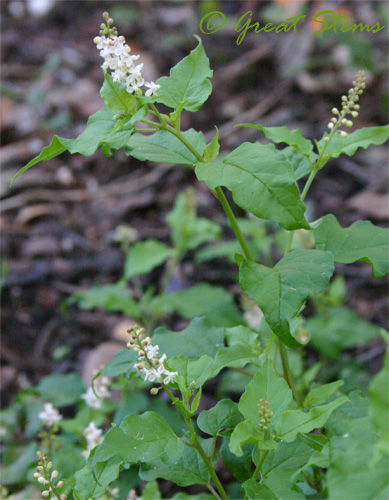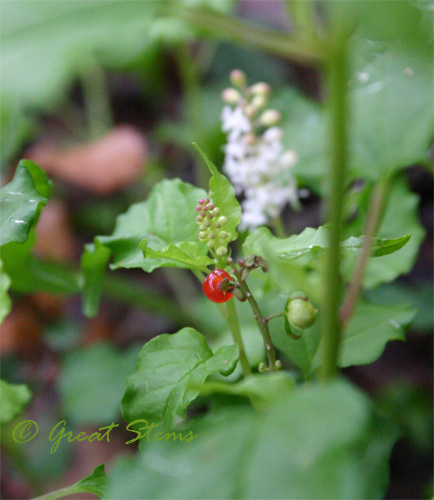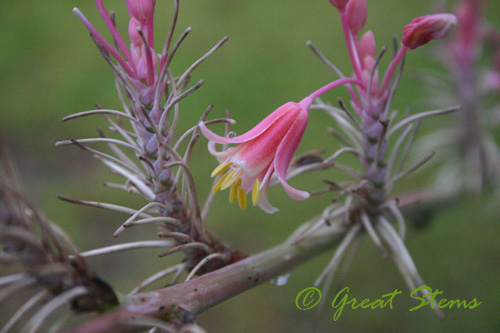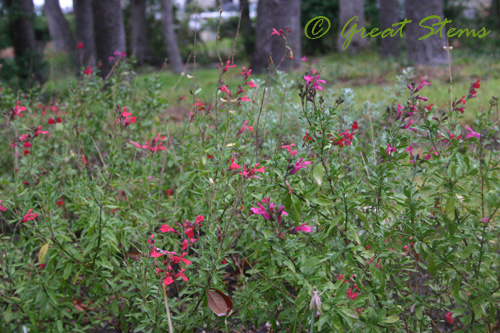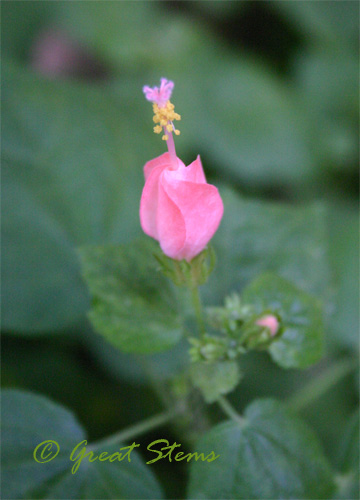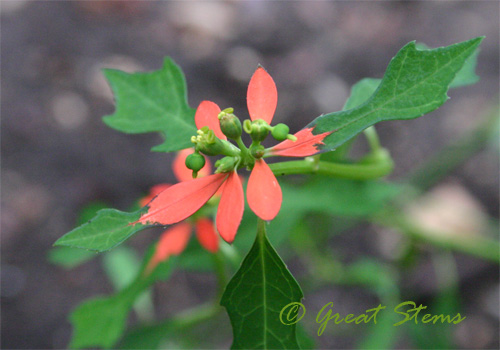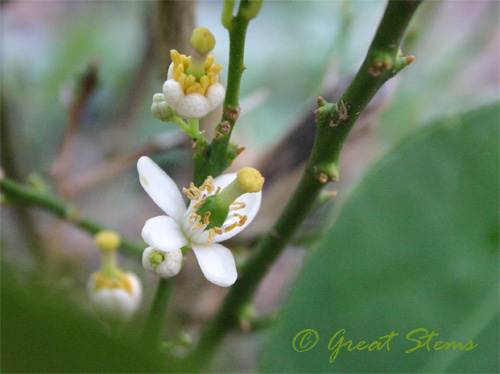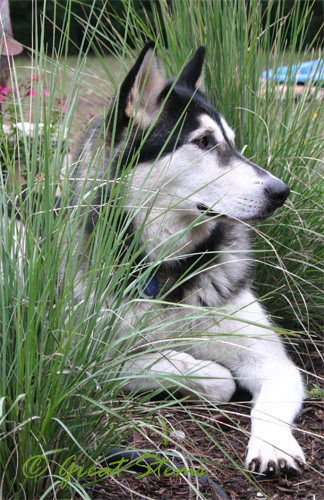As a special treat on Halloween, other recent Habitat Steward graduates and I had the honor of visiting the award-winning and very beautiful wildlife habitat of Dale and Pat Bulla here in Austin.
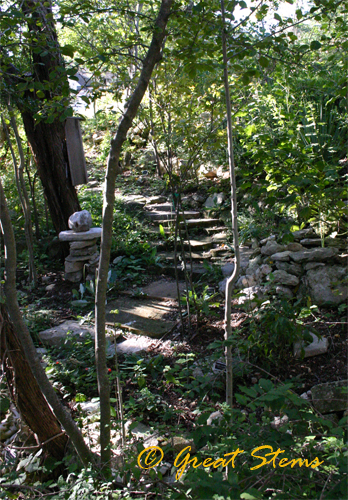 I had heard a lot about their spectacular wildscape, so when our Habitat Steward group was given the opportunity to have a tour, you know I jumped at the chance!
I had heard a lot about their spectacular wildscape, so when our Habitat Steward group was given the opportunity to have a tour, you know I jumped at the chance!
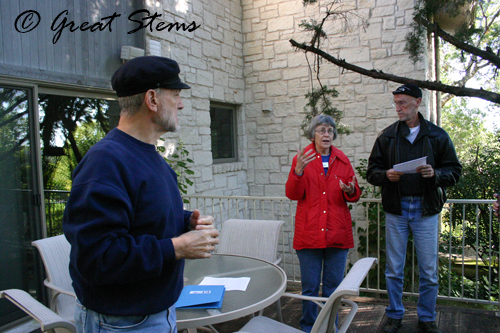 Dale (left) and Pat (center) are also both Habitat Stewards with NWF, and preserving native Texas plant life is exceptionally important to them. They are leaders in conservation efforts in Austin and Texas, and they were a primary force in helping their neighborhood win Austin’s Community Wildlife Habitat challenge in 2008 with the highest number of certified wildlife habitats.
Dale (left) and Pat (center) are also both Habitat Stewards with NWF, and preserving native Texas plant life is exceptionally important to them. They are leaders in conservation efforts in Austin and Texas, and they were a primary force in helping their neighborhood win Austin’s Community Wildlife Habitat challenge in 2008 with the highest number of certified wildlife habitats.
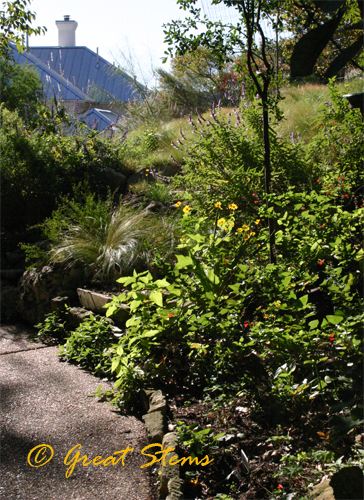 Pat and Dale have lived on their property since 1998, building their home on a rocky limestone slope overlooking the Balcones Canyonland Preserves. Their efforts to create a natural landscape since then have paid off — paths of natural materials such as mulch, rock, and cedar lead visitors through peaceful woods and past pocket seeps.
Pat and Dale have lived on their property since 1998, building their home on a rocky limestone slope overlooking the Balcones Canyonland Preserves. Their efforts to create a natural landscape since then have paid off — paths of natural materials such as mulch, rock, and cedar lead visitors through peaceful woods and past pocket seeps.
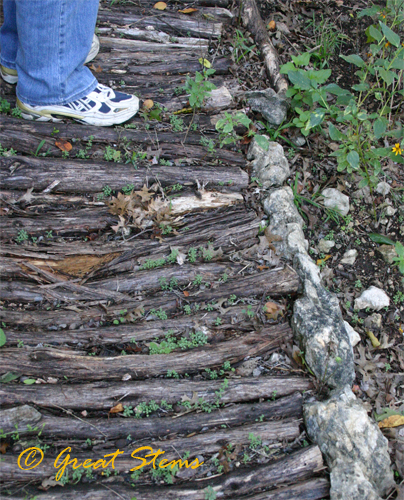 Many of the plants were placed there by the Bullas, but many more were delivered by birds and other creatures. The result is a wonderland of native Texas species.
Many of the plants were placed there by the Bullas, but many more were delivered by birds and other creatures. The result is a wonderland of native Texas species.
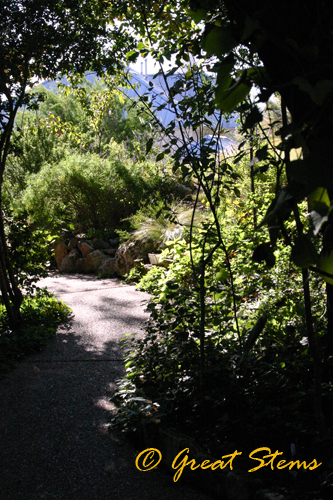
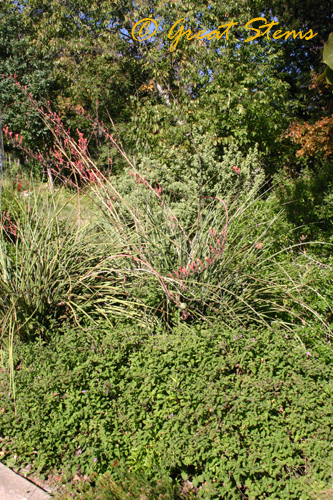
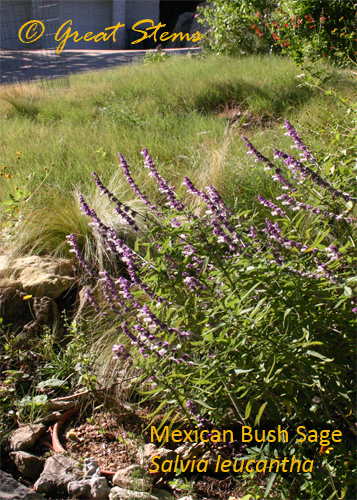
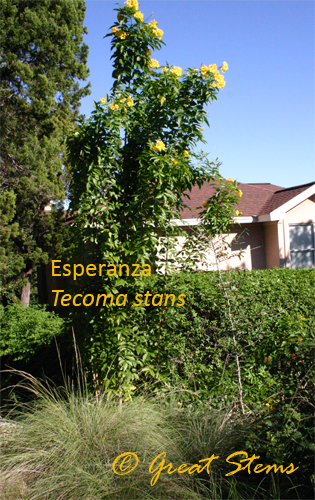 Pat told me that the plants on their property are about 95% native, with the remaining being well adapted plants such as rosemary and winter-blooming germander.
Pat told me that the plants on their property are about 95% native, with the remaining being well adapted plants such as rosemary and winter-blooming germander.
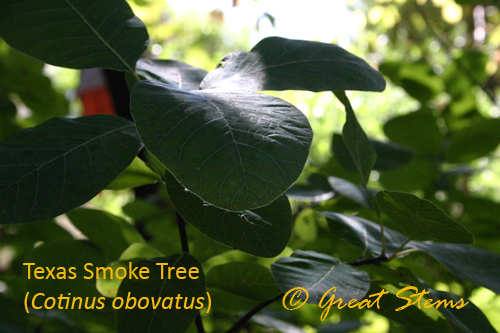
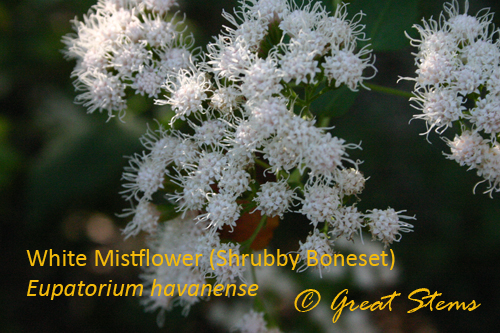
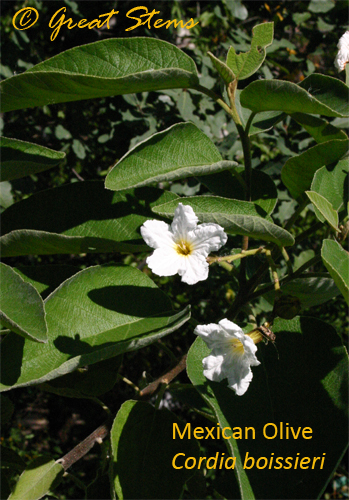
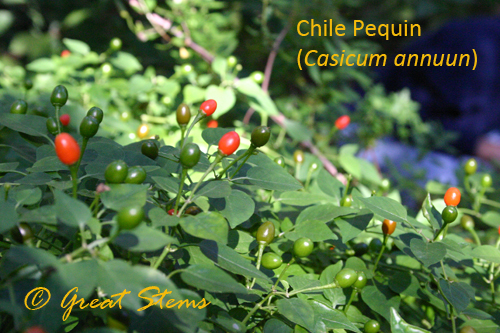
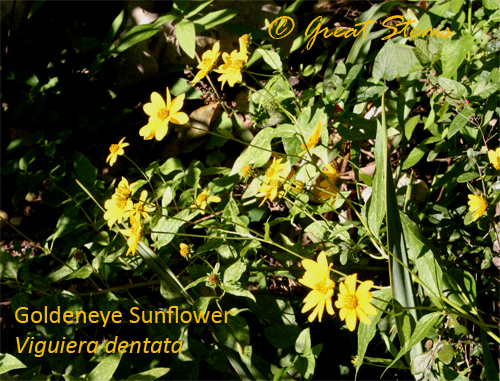
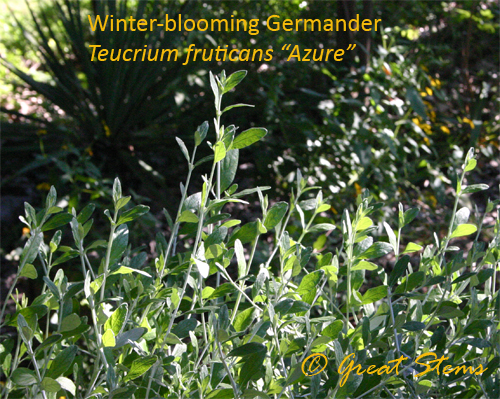
It being the end of October, we were able to see many species just beginning their fall fruit or fall color stages.
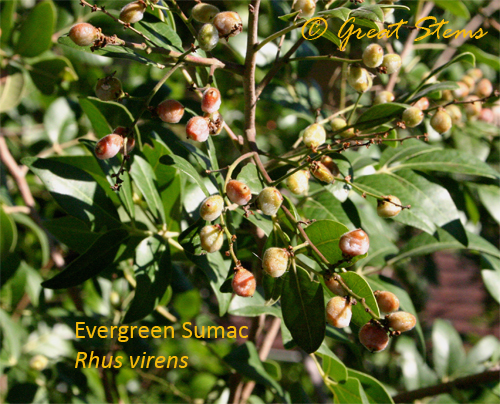
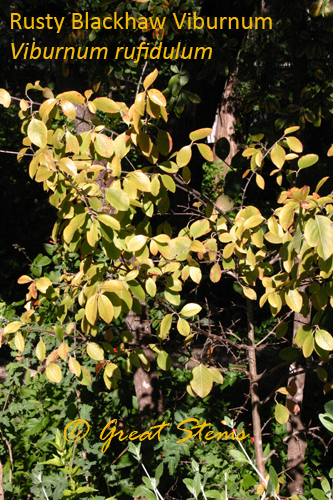
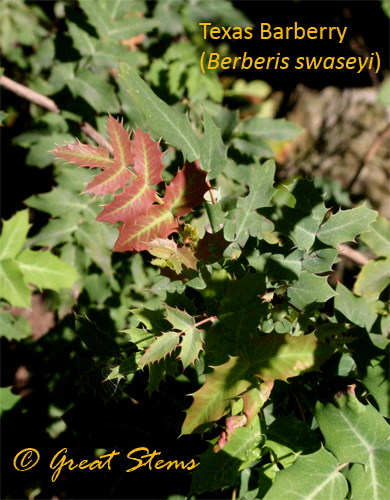
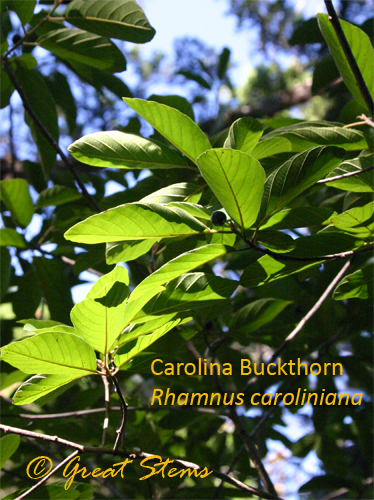
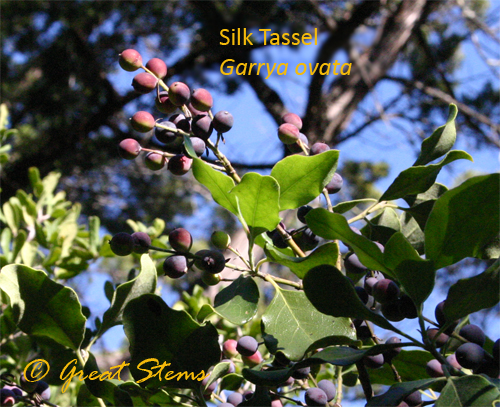 As we toured the Bulla wildscape, Dale and Pat identified many of their favorite trees, shrubs, and perennials, sometimes sharing stories about certain plants. We tasted the leaves of a Toothache Tree (Zanthoxylum hirsutum), and after a couple of minutes I felt my gums tingle, as if they were going numb. I want one of these trees for the pure fun of it.
As we toured the Bulla wildscape, Dale and Pat identified many of their favorite trees, shrubs, and perennials, sometimes sharing stories about certain plants. We tasted the leaves of a Toothache Tree (Zanthoxylum hirsutum), and after a couple of minutes I felt my gums tingle, as if they were going numb. I want one of these trees for the pure fun of it.
The Bullas are fortunate to have many rare or unusual plants, such as the Lindheimer’s Crown-Beard (Verbesina lindheimeri), a plant so rare and special that the Wildflower Center collected seeds from the Bulla plants and sent them to the Millennium Seed Bank in London. Other plants, not necessarily considered rare, can still quite difficult to find in nurseries.
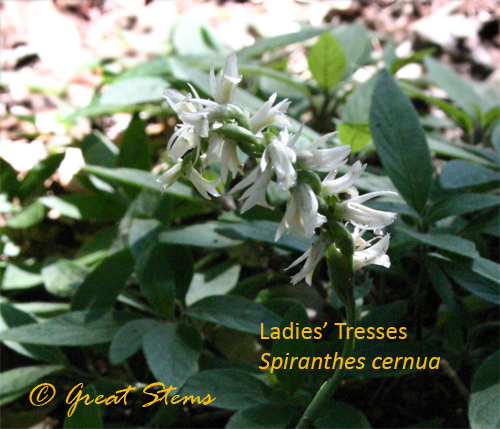
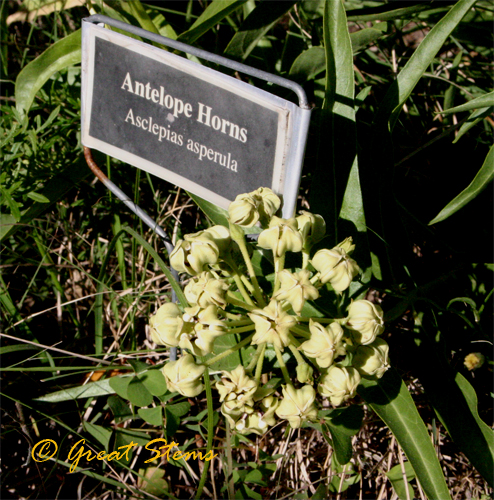
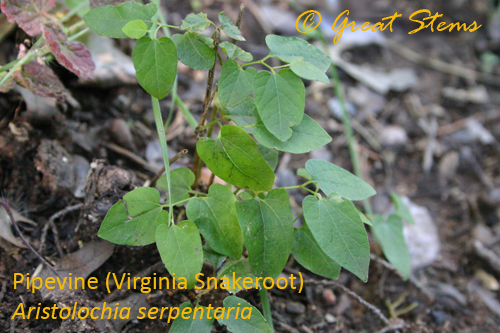
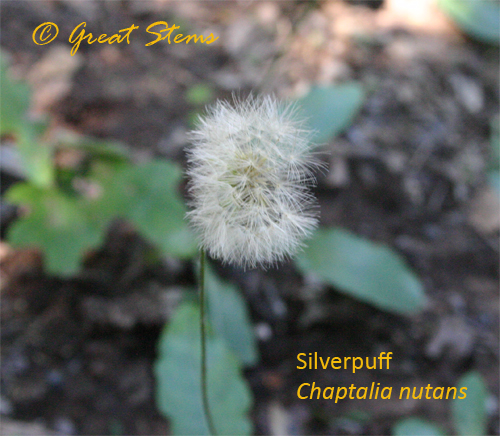
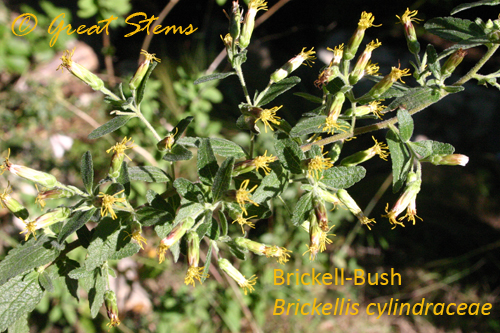 The Bullas study the soil, light, and water conditions of their property in order to best place plants. With a combination of rocky slopes, natural seeps, sun, shade, woods, and open areas all on their property, it seemed to me that they had an advantage in being able to plant a little bit of everything!
The Bullas study the soil, light, and water conditions of their property in order to best place plants. With a combination of rocky slopes, natural seeps, sun, shade, woods, and open areas all on their property, it seemed to me that they had an advantage in being able to plant a little bit of everything!
Bluebonnet seedlings, Tropical Sage, Little Bluestem, and other plants were interspersed in the Buffalo grass of the Bullas’ front yard mini-prairie.
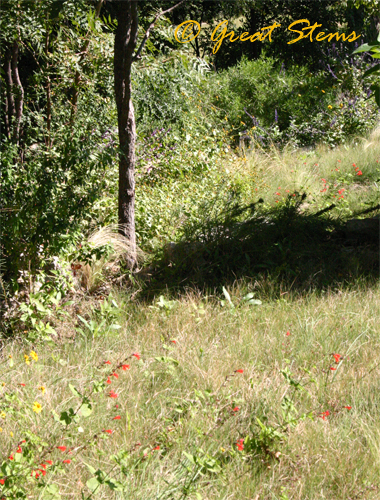
Amazingly, the habitat is home to six different kinds of native Texas passionflower vines.
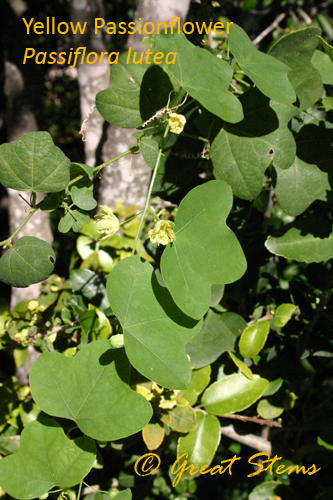
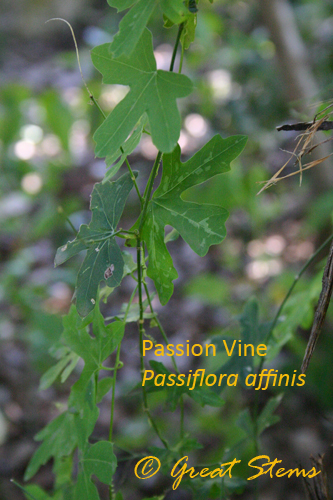
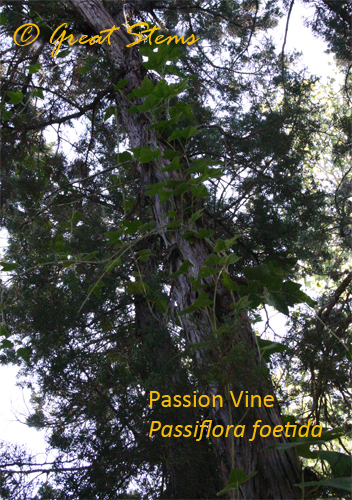
The Bullas have a knack for creating functional habitat features that blend in with the natural setting, including a manmade seep-like water source, beebox (with nesting holes for solitary bees), and rock man.
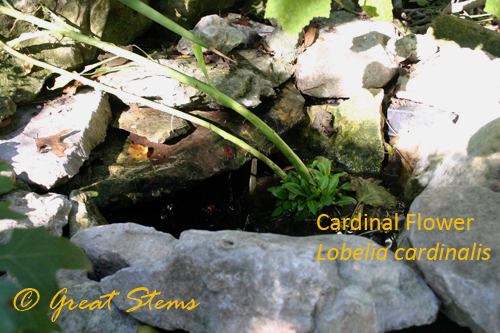
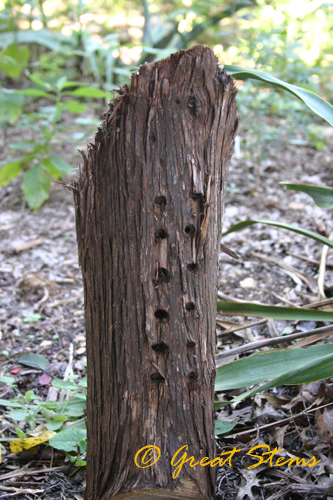
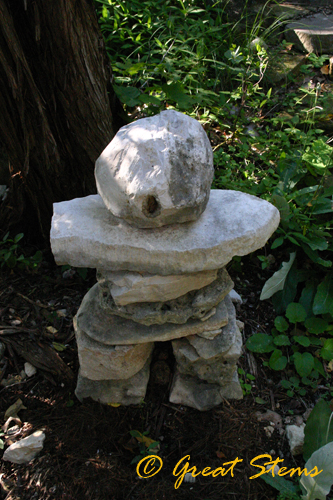
Dale and Pat’s home serves as an example to others about how to minimize their carbon footprint. Not only is their carbon footprint exceptionally low due to natural paths, water collection systems, zero lawn, and minimal water usage, the Bullas also use solar panels that produce enough electricity to actually return some back to the city.
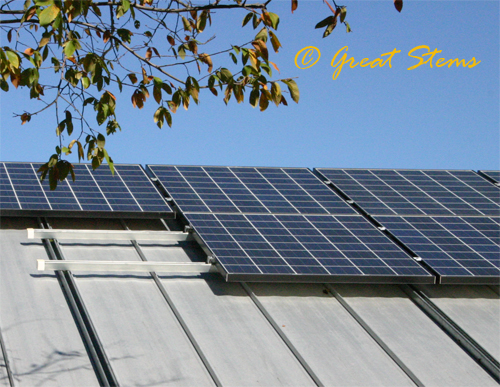 And of course, the wildlife love the Bullas’ habitat, too. Unfortunately for the Bullas, however, this includes destructive feral hogs that visit the property from the BCP during the night, occasionally tearing up pathways and plants while looking for grubs, roots, and tasty vegetation. Deer prevent Dale and Pat from planting certain delectable species and veggies, too. But birds, butterflies, lizards, and other creatures call the Bullas’ habitat home. We enjoyed watching the Queens and Monarchs fluttering about, but I was truly mesmerized by this Buckeye. I have yet to see a Buckeye in my yard!
And of course, the wildlife love the Bullas’ habitat, too. Unfortunately for the Bullas, however, this includes destructive feral hogs that visit the property from the BCP during the night, occasionally tearing up pathways and plants while looking for grubs, roots, and tasty vegetation. Deer prevent Dale and Pat from planting certain delectable species and veggies, too. But birds, butterflies, lizards, and other creatures call the Bullas’ habitat home. We enjoyed watching the Queens and Monarchs fluttering about, but I was truly mesmerized by this Buckeye. I have yet to see a Buckeye in my yard!
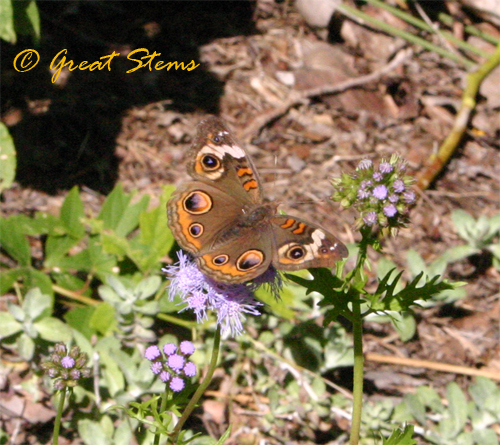 It’s no wonder the Bullas’ habitat is designated as a Green Garden by the City of Austin. An award well deserved!
It’s no wonder the Bullas’ habitat is designated as a Green Garden by the City of Austin. An award well deserved!
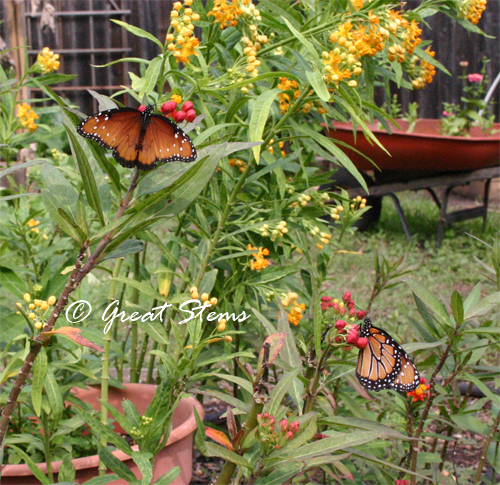
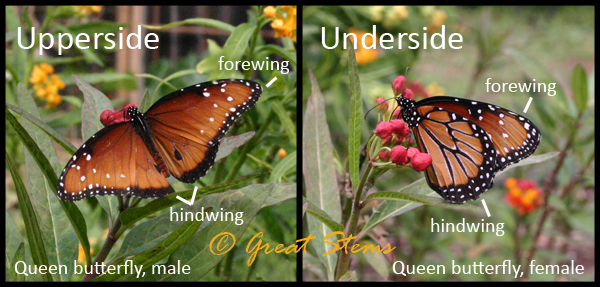
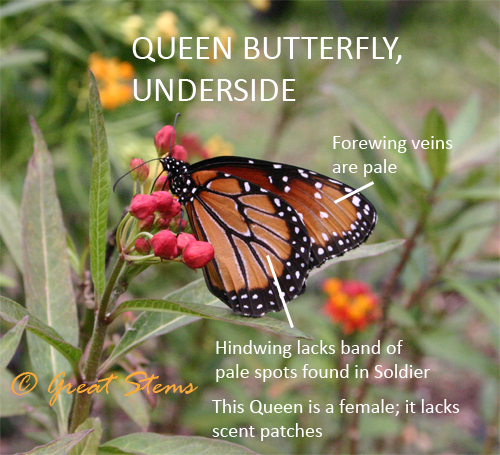
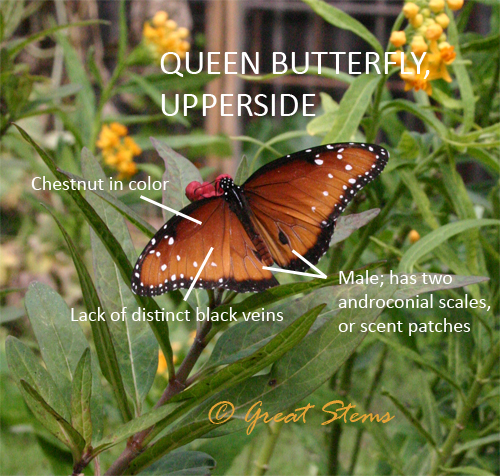
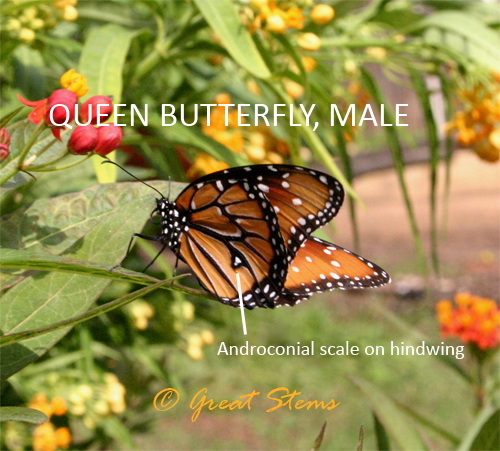
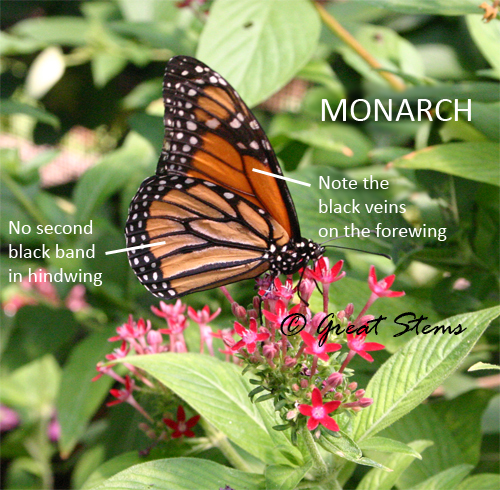
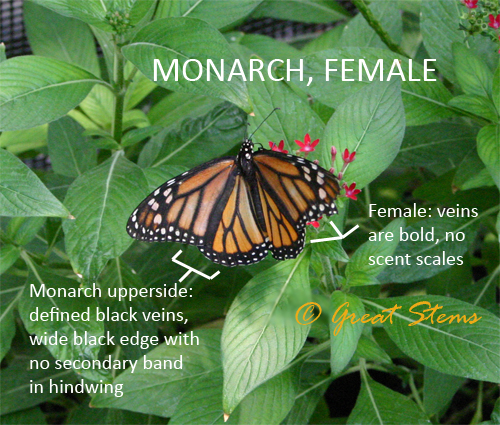
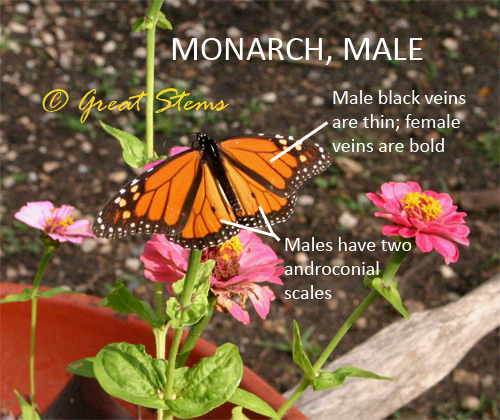
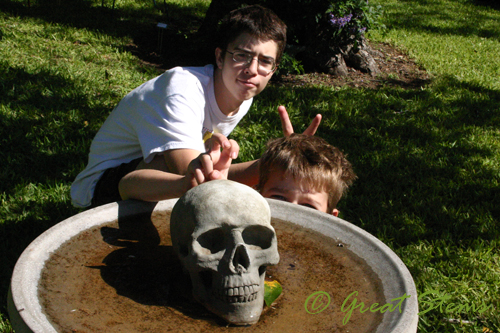
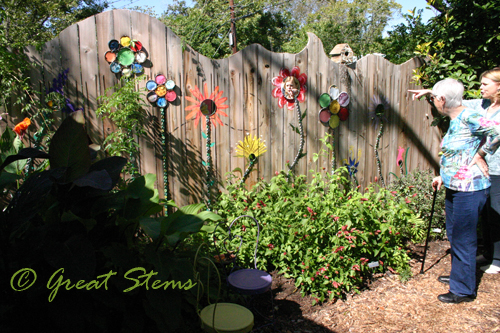
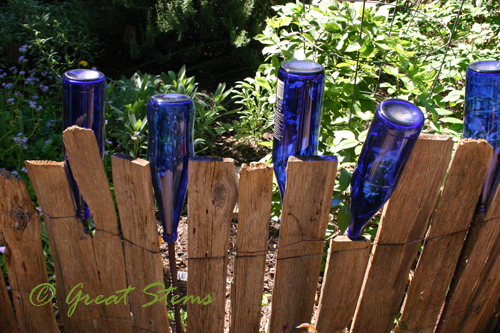
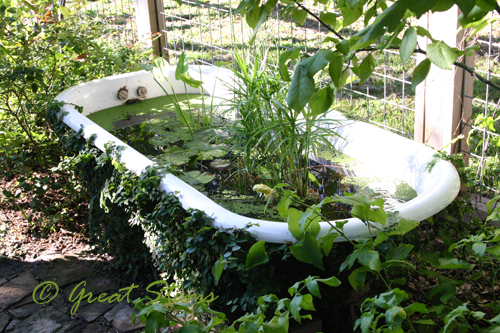
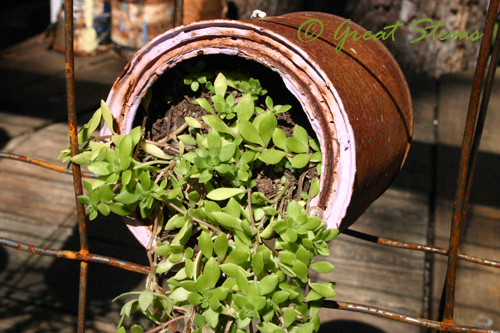
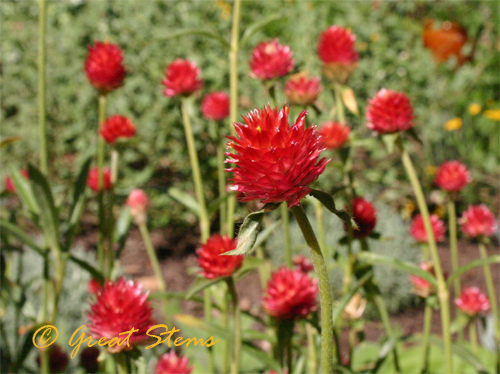
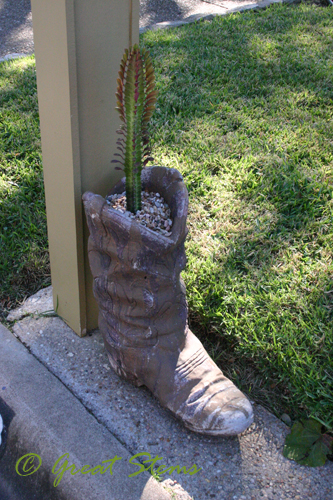
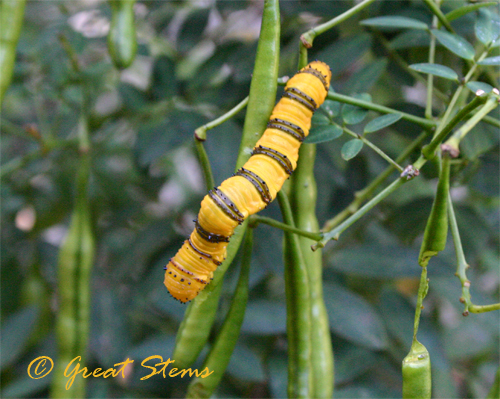
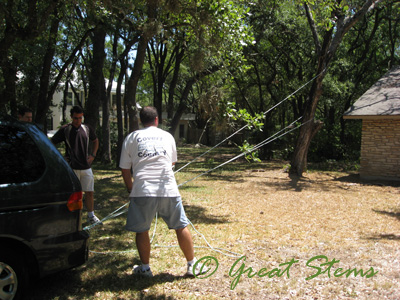
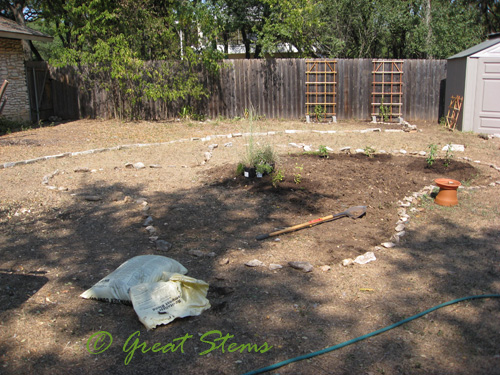
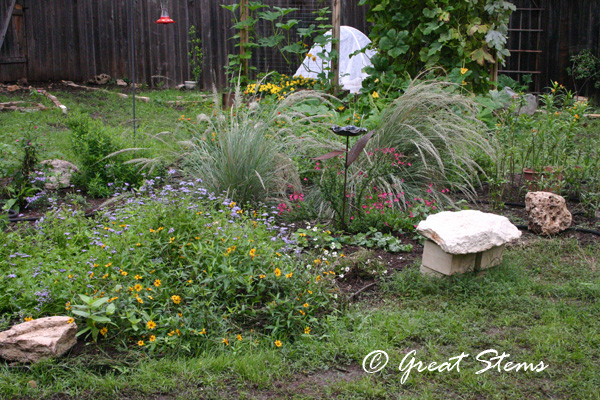
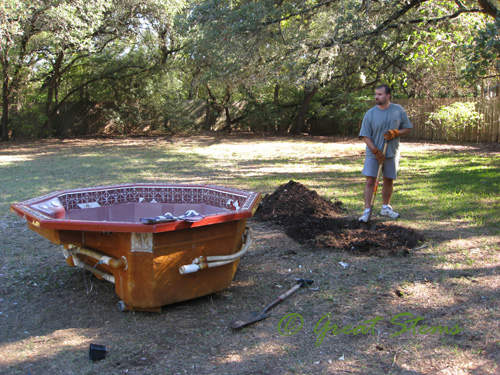
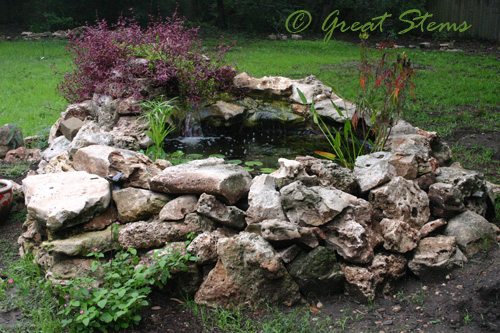

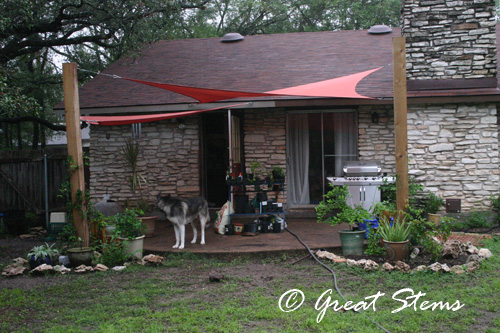
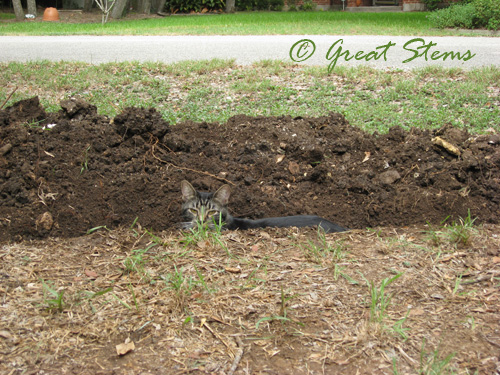
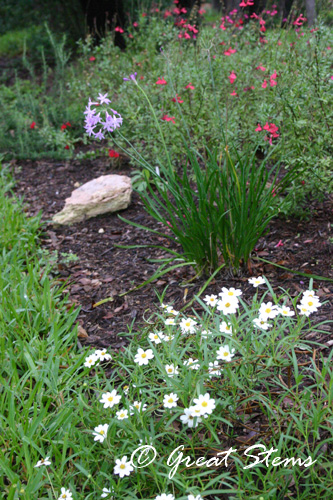 There’s a lot more to our yard than what you see here, and I invite you to
There’s a lot more to our yard than what you see here, and I invite you to 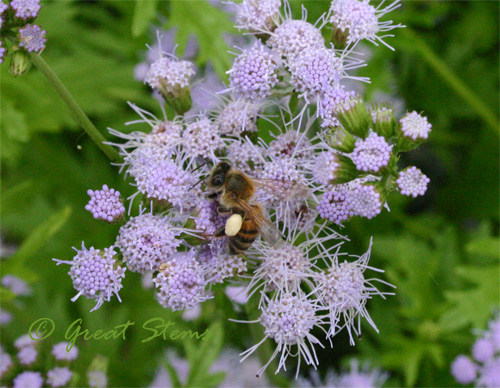
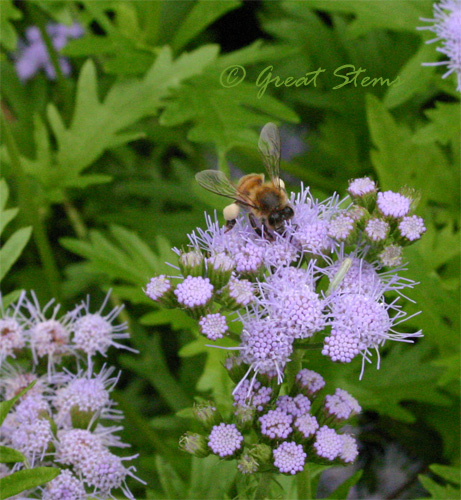
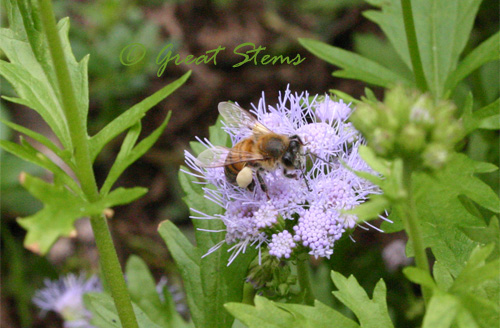 In the same patch of flowers, the honeybees on the Zexmenia had bright orange pollen baskets on their little legs.
In the same patch of flowers, the honeybees on the Zexmenia had bright orange pollen baskets on their little legs.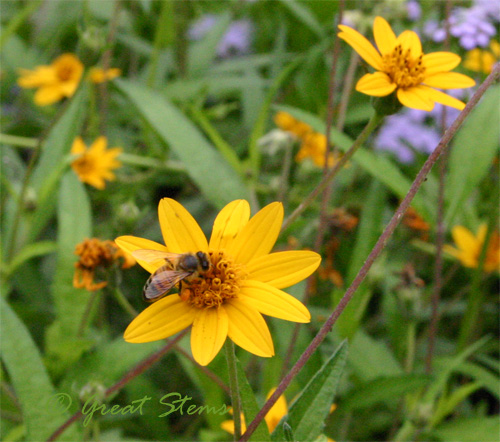
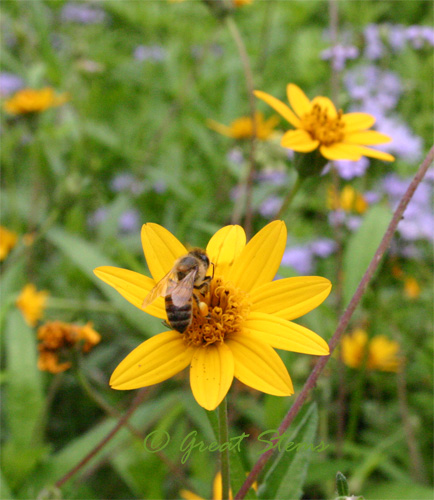
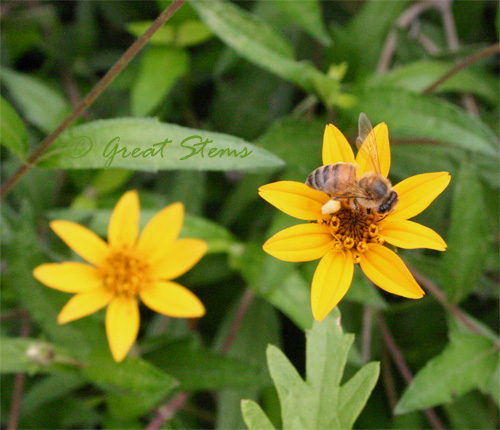
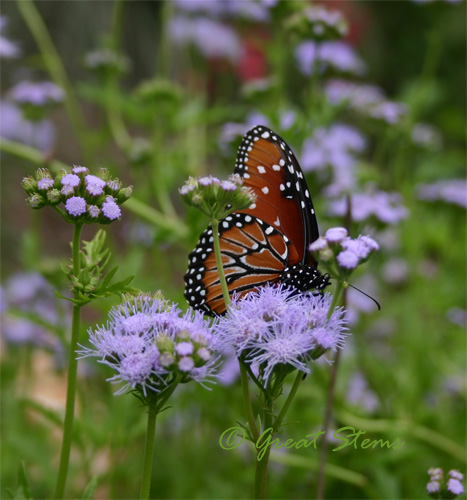
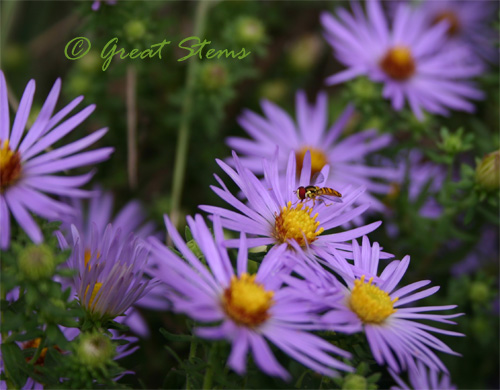
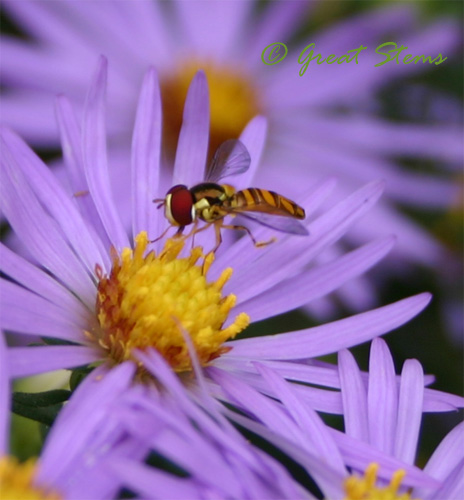
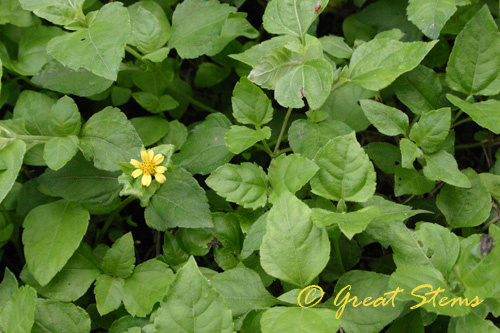
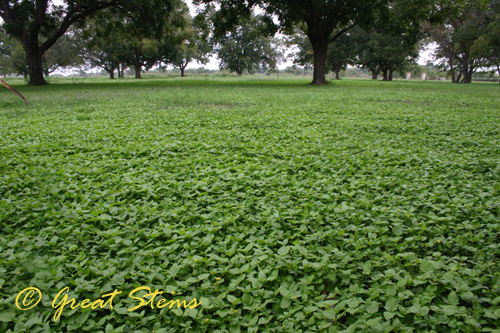
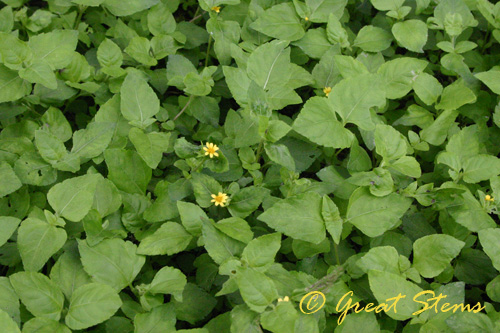
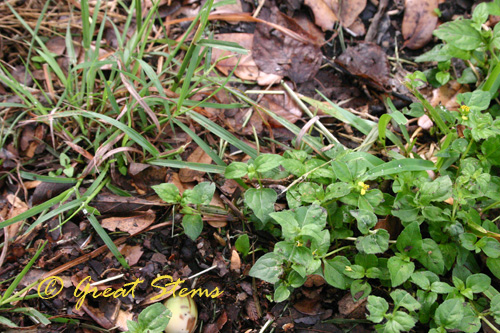
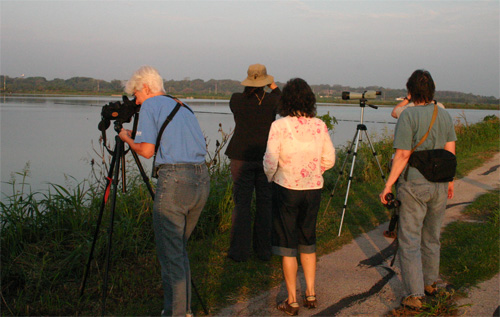 Hornsby Bend is an area along a “bend” of the Colorado River, southeast of Austin, Texas, near the airport. Once home to dense forests and thickets, a man named Reuben Hornsby settled there in 1832, clearing the land for agricultural uses. Today it is home to the
Hornsby Bend is an area along a “bend” of the Colorado River, southeast of Austin, Texas, near the airport. Once home to dense forests and thickets, a man named Reuben Hornsby settled there in 1832, clearing the land for agricultural uses. Today it is home to the 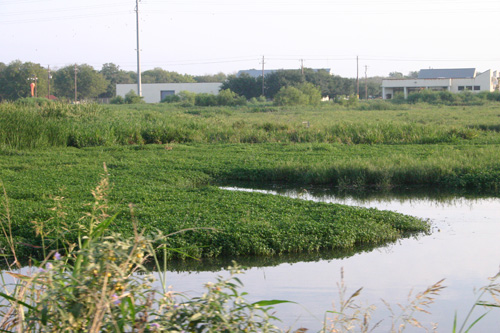 But Hornsby Bend is so much more — 1,200 acres of marshes, woodlands, pastures, and riparian (river) areas. Because of the incredible biodiversity along the food chain and its multiple habitats, it has become known nationally as one of the best birdwatching sites in Texas, especially during times of migration. More than 360 species of birds have been sighted at Hornsby Bend. Migratory shorebirds, wading birds, and landbirds, some from the Arctic or from the southern tip of South America, stop at the ponds of Hornsby Bend as they travel to and from their winter habitats.
But Hornsby Bend is so much more — 1,200 acres of marshes, woodlands, pastures, and riparian (river) areas. Because of the incredible biodiversity along the food chain and its multiple habitats, it has become known nationally as one of the best birdwatching sites in Texas, especially during times of migration. More than 360 species of birds have been sighted at Hornsby Bend. Migratory shorebirds, wading birds, and landbirds, some from the Arctic or from the southern tip of South America, stop at the ponds of Hornsby Bend as they travel to and from their winter habitats.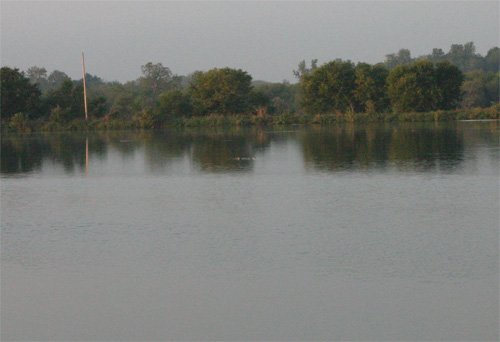
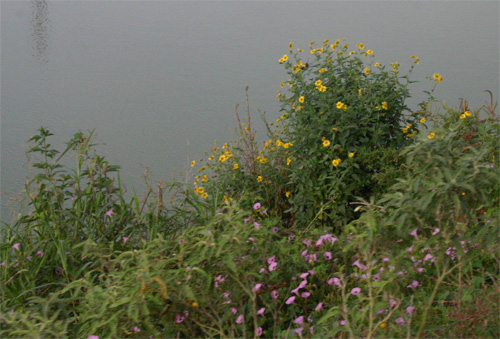
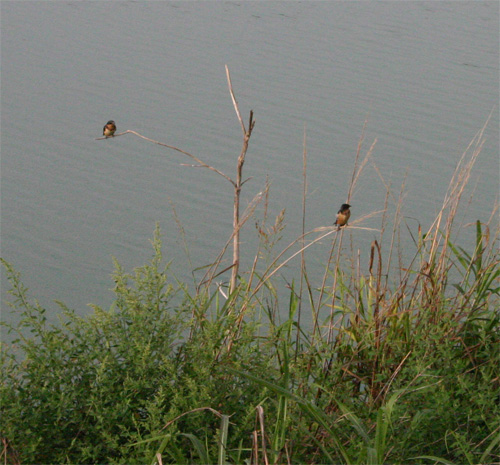 Near the wet grounds by the compost, many least sandpipers and other species scooted about for insects.
Near the wet grounds by the compost, many least sandpipers and other species scooted about for insects.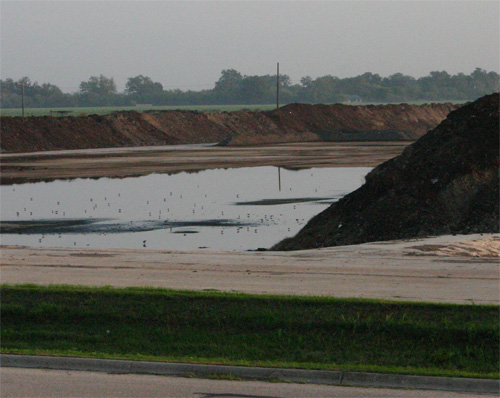 And humans studied them from afar.
And humans studied them from afar.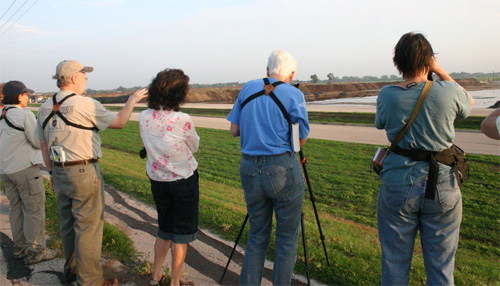 The wooded areas along the river provided opportunities to see tree-perching birds. A quiet walk along the paths allowed us to listen to the beautiful songs of many a bird, including the white-eyed vireo.
The wooded areas along the river provided opportunities to see tree-perching birds. A quiet walk along the paths allowed us to listen to the beautiful songs of many a bird, including the white-eyed vireo. 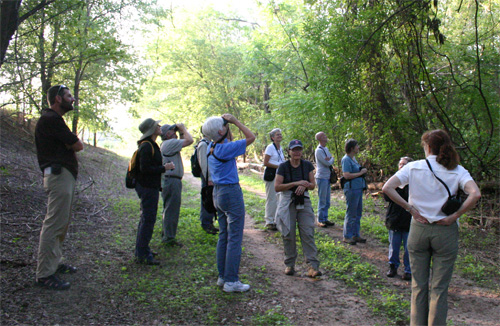 Another treatment area, these long greenhouses will also provide winter shelter to area birds. A red-shouldered hawk reportedly has hunted in there, in fact.
Another treatment area, these long greenhouses will also provide winter shelter to area birds. A red-shouldered hawk reportedly has hunted in there, in fact.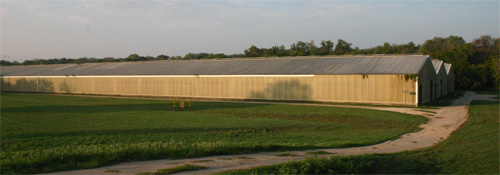
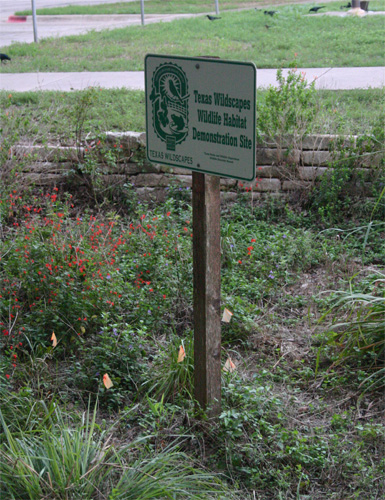 And there are purple martins, too, though they are absent in September.
And there are purple martins, too, though they are absent in September.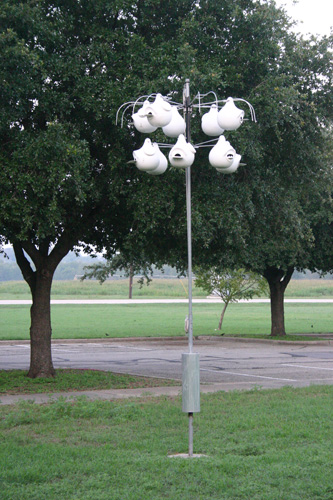
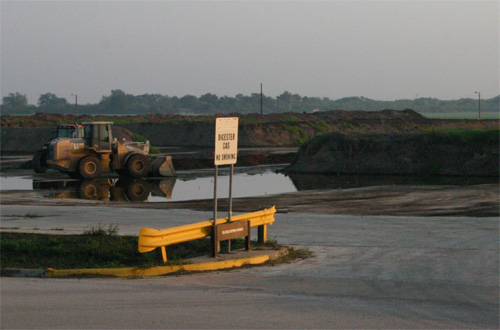 Back at the main building, the Habitat Steward Trainees listened to three speakers. The knowledge I gained this day was tremendous, from the history of the soil in the Austin area to the how’s and whys of organic matter, and from butterflies of Central Texas to urban wildlife, such as coyotes and raccoons. A great day, and a great place to visit.
Back at the main building, the Habitat Steward Trainees listened to three speakers. The knowledge I gained this day was tremendous, from the history of the soil in the Austin area to the how’s and whys of organic matter, and from butterflies of Central Texas to urban wildlife, such as coyotes and raccoons. A great day, and a great place to visit.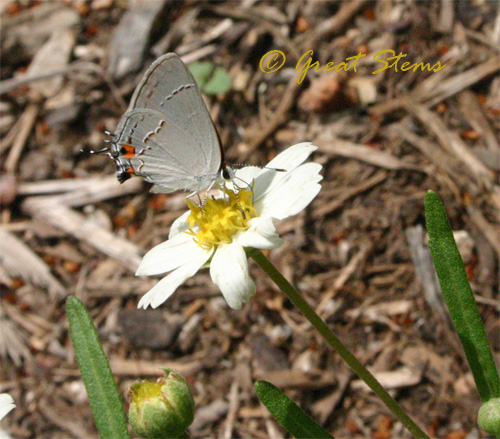
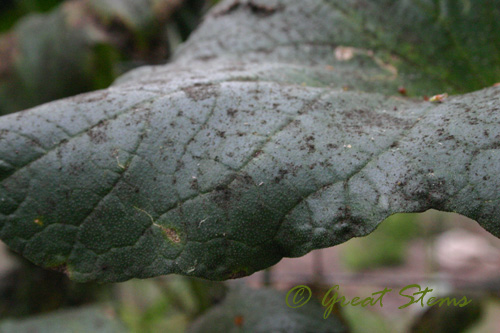
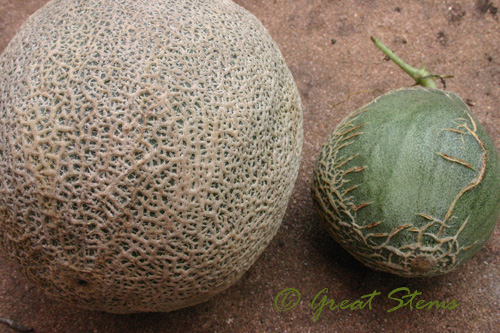
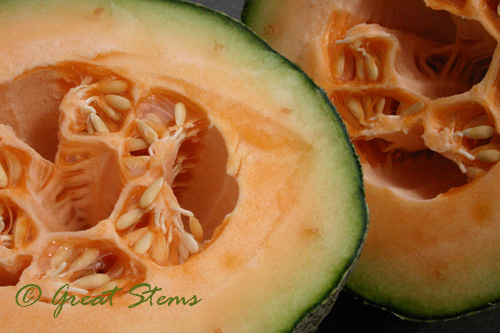 So I began the process of cutting up the fruit for the compost bin. By the way, ever wonder what the inside of a young cantaloupe looks like? Pretty cool.
So I began the process of cutting up the fruit for the compost bin. By the way, ever wonder what the inside of a young cantaloupe looks like? Pretty cool.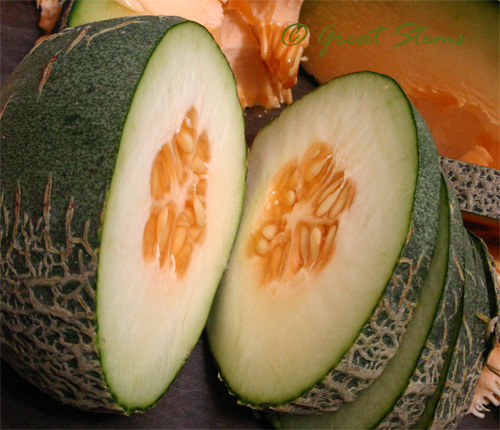
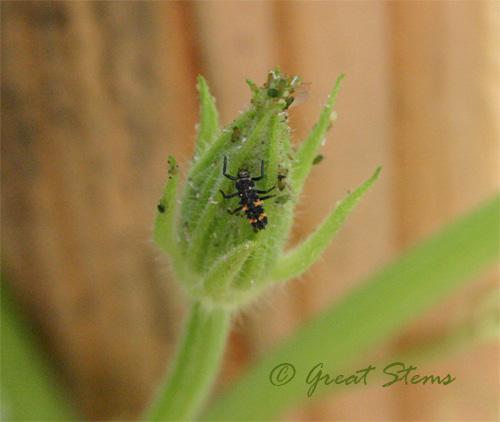
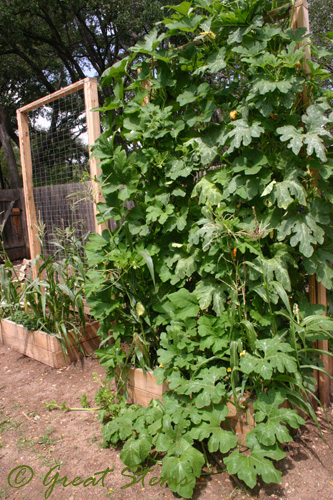
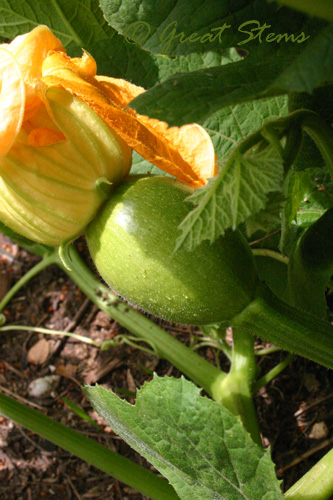
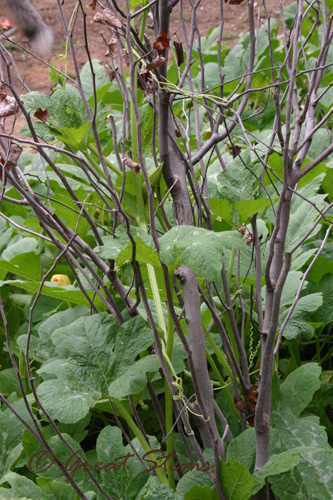
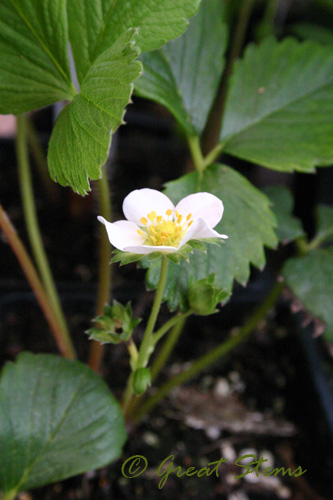
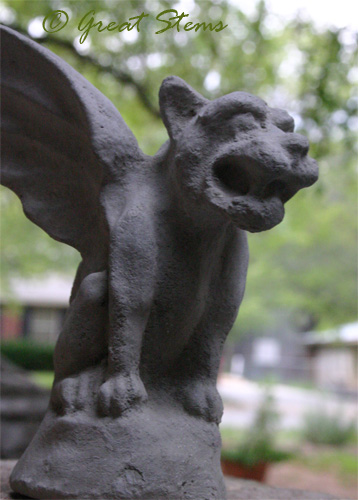
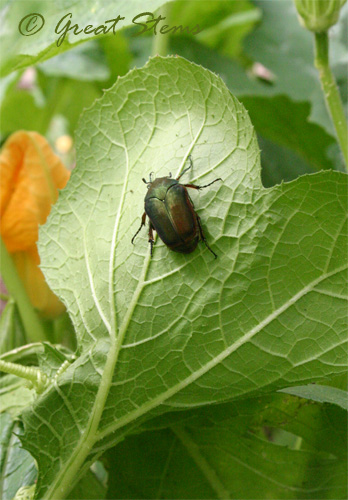
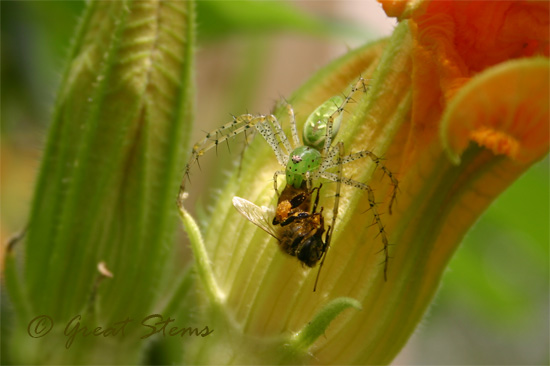
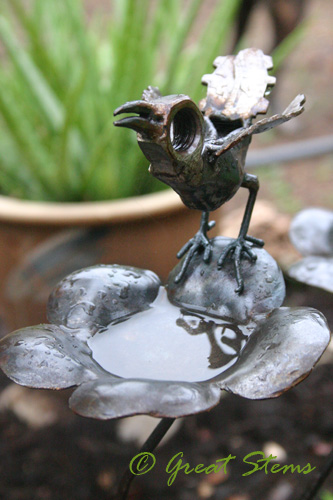
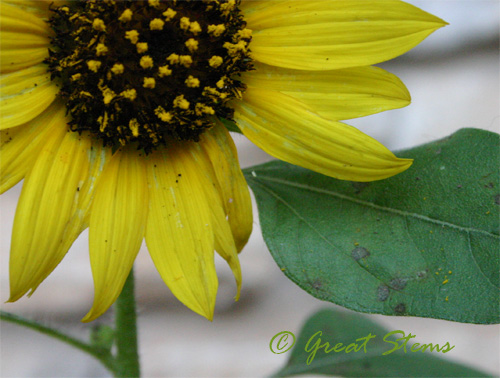
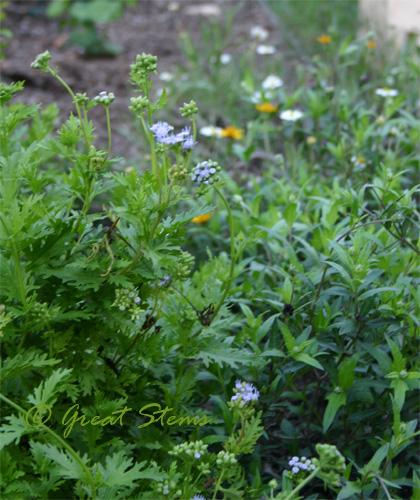 The Pigeonberry plants are blooming like crazy. They berry, too, but the birds pick them off so fast.
The Pigeonberry plants are blooming like crazy. They berry, too, but the birds pick them off so fast.